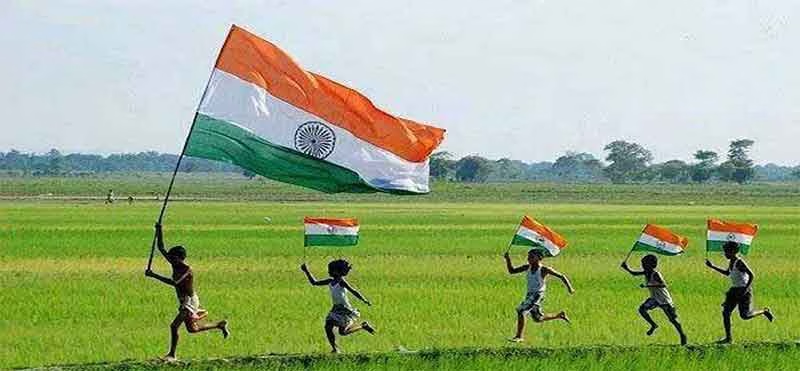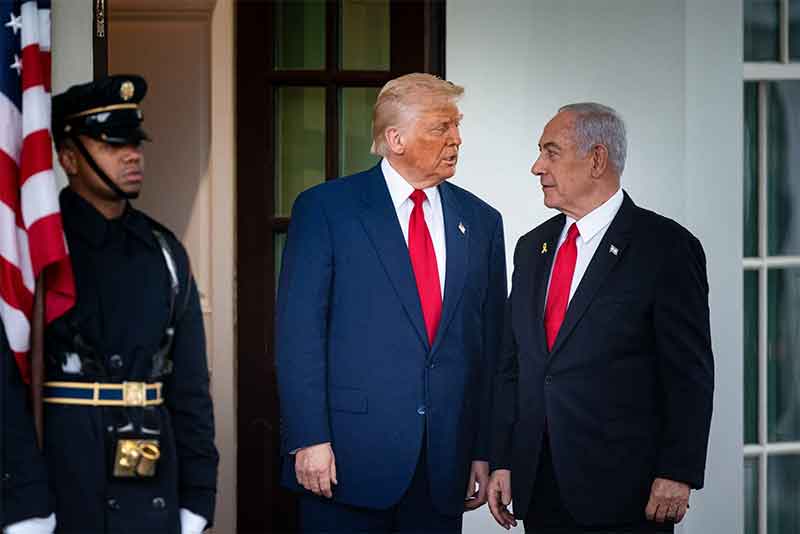
Construction of Communalism in Colonial North India, Gyanendra Pandey, Delhi, oxford university Press, 1992, pp297, Price: Rs 100.10
The present epoch of Indian history is marked by its ‘decolonization’ through World Bank-IMF sponsored ‘developmental’ economic policies of ‘liberalization- privatization-globalization’ on the one hand and rising tides of communalism on the other. The communal historiography , claiming ‘hinduttva’ to be synonymous with nationalism, has accelerated its attempts to reconstruct the Indian past based on myths, superstitions and beliefs, more particularly after the RSS-VHP-BJP network ‘corrected’ a 16th century historical ‘wrong ‘by demolishing Babari Masjid at Ajodhya on December 6, last year. When there is distortion of history, it has to be corrected, for it percolates down the popular perceptions of history and feeds communal emotions. Whereas communalism has been one of the central points of academic debate taking place in India, its history remains inadequately researched and analyses. The book under review, which according to its author, seeks to ‘’examine the conditions, the character and the consequences of what has been called ‘communal’ conflict in 19 the and early 20 the century India’’ provides deep insight into the genesis and evolution of the problem of communalism through an examination of the discourse that gave it meaning
One of the most intellectually debilitating absurd assumptions accepted by most Indians
Is that anything involving people of two different’ religious communities’ automatically falls under the heading ‘communal relations’. That is why we have leaders and Muslim (or Sikh) leaders, intellectuals and Muslim intellectuals and so on. Political parties, while choosing their electoral candidates, make caste\communal consideration as one of the bases of their power arithmetic. Argument by definition and tautology there by replaces argument by analysis. Gyanendra Pandey’s construction of Communalism in Colonial North India question some of these assumption and examines the genesis and evolution of the concept in its historical context.
Communalism is not an element of human biology; nor is it even an idea that can plausibly be imagined to live an eternal life of its own. Communalism is not an idea but an ideology. It came into existence at a discernible historical moment for rationally understandable historical reasons and it’s subject to change for similar reasons. ‘Communalism’ as Gyanendra Pandey puts it, is a ‘’ a form of colonialist knowledge. The concept stands for the puerile and primitive – all that colonialism, in its own reckoning was not. The paradox is that the nationalists have done more than anyone else to propagate its use (p6). Ironically, the word ‘communal’ which should logically be a derivative from community, in its common Indian usage, refers to ‘’ a condition of suspicion, fear and hostility between members of different religious communities’’ As aptly pointed out by the author, ‘communalism’ in this sense is never applied to feudal Europe or other pre-capitalist societies where religiosity was no narrower and strife between members of different religious persuasions not rare’’.
Though the present work does not explain the socio-economic and political factors responsible for acceptance of this ‘colonialist knowledge’ as an ideology at societal level, it underlines acceptance of the colonial agenda and paradigm by nationalist as well as Marxist historians.
Prior to its colonization by British, political fragmentation and cultural and religious plurality co-existed. United by the Indian sub continental civilizational value Waves j of invasions and migrations added to its pluralities and of course of time were assimilated into the millennia- old civilization. The advent of Islam hardly altered the civilizational characteristic except enriching its plurality. But advent of colonialism had far-reaching effects. It destroyed the native industries. Altered the land owning system and set on to defining the Indian people in order to establish ideological hegemony of colonial superiority to consolidate and continue colonial rule. And, by the end of the19thcentury, the dominant strand in colonialist historiography was representing’’ religious bigotry and conflict between people of different religious persuasions as one of the more distinctive features of Indian society past and present- a mark of the Indian section of the ‘orient’’’ (p23). Needless to say, the aim of colonial historiography was to establish ideological superiority of European civilizations and to deny to the Indian people not only their present but also their past. ‘’communalism in the colonialist perception served to designate a pathological condition. It was like the term tribalism- which has been widely employed in writing on African politics and history. Communalism in India is not an age old phenomenon as colonialist and communalist sense of history would like us to believe but is ‘’ another characteristic and paradoxical product of the age of reason ( and of capital ) which also gave us colonialism and nationalism’’(p5).
Towards the end of 1920s the government of India drew up and collaborate list of Hindu- Muslim riots that had occurred I the country in the recent past’. The author of the present work diagnoses the events and their colonial descriptions and explanations and nationalist response to establish that communalism as a definitional characteristic of the Indian people was part of the colonial discourse that argued that’’ the natives are hopelessly divided , given to primitive passions and incapable of managing their own affairs’’, in order to legitimize British power. As pointed out by Pandey , the varying accounts of ‘riots’ of 1809 in Banaras by colonial administration and historians was aimed at establishing age – old hostility among different religious and caste communities to fit into the structure ;’’ Evil clashes evil. Good intervenes. Order restored’’ (p39). By then ’communal’ had become an ‘’adjective derived not from ‘ community’ but from ‘tension between the religious communities’’. And since the time of Nehru report. 1928, this colonial construct started making inroads into nationalist discourse and by the mid-1930s. the nationalists were using phrases like the ‘ communal question’ and ‘communalism’ freely to describe the problem of antagonism between Hindus and Muslims and the politics built up to protect their allegedly separate interest.’’ Some- times in popular and academic usage. The term has been narrowed even further to refer only to the Muslim and their politics (p). Unable to comprehend the complexities of the social structure, the colonial construction of Indian society, depending upon the changings needs of colonial rule, changed over time and reached’’ it’s apparently fixed and ‘developed’ form only in the late 19th century.’’ With the help of insightful examination of ‘The’ Bigoted Juana’, one of the ‘caste- stereotypes’ constructed by the colonial historians. The author has demonstrated how the altered needs of colonial economy brought about a significant change in the colonial understanding of Indian society (pp66-108)
Pandey exposes the colonial historiography and proposes ‘Community as History’ – the historical memory and accounts of the ‘little community’, an example of which is Wapeat- o-Hades at: Qasba Mubarakpur, examined in this work (pp109-157) but does not examine the historical development of community and custom in a particular time mad space.
Nevertheless it has been evident that such historical construction were part of general assertion of the community and status by different groups and classes, which, paradoxically, ‘’’’was to transform the very sense of ‘community’ and redefine it at every level’’ (pp158-200). In response and reaction to the colonial construction, the attempts of self-definition by Indian leaders gave birth to several ideologies and the anti- colonial struggle involved mobilization of a wider Hindu community and wider Muslim community, often to build up nationalist feelings and associations ‘’ that went beyond the confines and concerns of religious community’’(pp201-232). It was the logic of this early nationalist position, according to the anchor,’’ that led to the Lucknow pact, the open espousal of separate electorate’ ’and ‘’indeed to terms of ‘Joint’Khilafat Non – Cooperation movement.’’ thus, it is argued that the political vision of ‘’potential unity of all Indians’’ was combined with the social vision of ‘India’ as’Hindu’+’Muslim’+’Sikh’, etc., which speaks the limits of the early Indian liberalism’’ that was manifestly inadequate for its own project of building a liberal nation of free and equal citizens ‘’ (pp231-32).
The Hindu and Muslim movements and the spate of Hindu- Muslim riots after1923 onwards, according to the author, pointed sharply to the heightened dangers arising from community- based mobilization. It provided sectarian organizations adopting far more extreme position a ‘’ new importance ‘’ and led eventually to the emergence of two-nation’ theory. With the introduction of the mass element in the Indian politics. The participation of workers and peasants in the nationalist activities caused reinterpretation of nationalist symbols and slogans. It brought about’ ’a new reversal in nationalist discourse’’ that regarded’’ communitarian mobilization ‘’ as ‘’ distorted and distorting lendency ‘’(pp234-35). Thus, as has been analytically documented by the author,’’ the arose a new contest between two different conceptions of nationalism – one that recognized the governess of ‘pre-existing ‘ communities which were to form the basis of new India, and another that challenged this view of history, past and preseny. Alongside these there developed yet another king of ‘national- ism’\’ communalism ‘ that sought to establish a hierarchy of cultures among the cultures of India’’(pp233-60)
Therefore the present day debate over the questions of identities and its different conceptualization and their varying undertones and accents should be placed in its proper historical context. To understand and counter the present aggressive upsurge of communal- ism, it is imperative upon us to understand its historical character and ‘’ the historical character of communalism (or nationalism) musdt come after the historical character of the pasthas been established. The past is historical not only in its obvious sense that the past makes up history. It is historical also in the sense that ‘history’ itself- the past recalled- is constructed. The modern historu of India,in this ense, was first written in the in colonial times and by colonialists.It was the colonialist writer who established the pattern of Indian past pretty much as we know it today. And in that pattern, sectarian strife was an important motif.
Even after the end of the colonial rule, the construction of the Indian past on the pattern of its colonial construction continus under the auspices of ‘new world order’by communal organization who were opposed to and\ or critical of the anti- colonial struggle,peaceful or violent’ The book under rebiew establishes the linkage between the colonial and the communal construction of Indian past , though without going intdo the precolonial state of affairs as far as religioys fanaticism and ortjodoxy is concerned. The author suggests ‘community as history’ as the alternative to colonial historiography but does not confront the questions related with the making of the ‘community’ or ‘custom’ for that matter. But them he addresses himself to the question of only one of the colonial construction-communalism.
Ish Mishra is a former DU Professor
SIGN UP FOR COUNTERCURRENTS DAILY NEWS LETTER









































